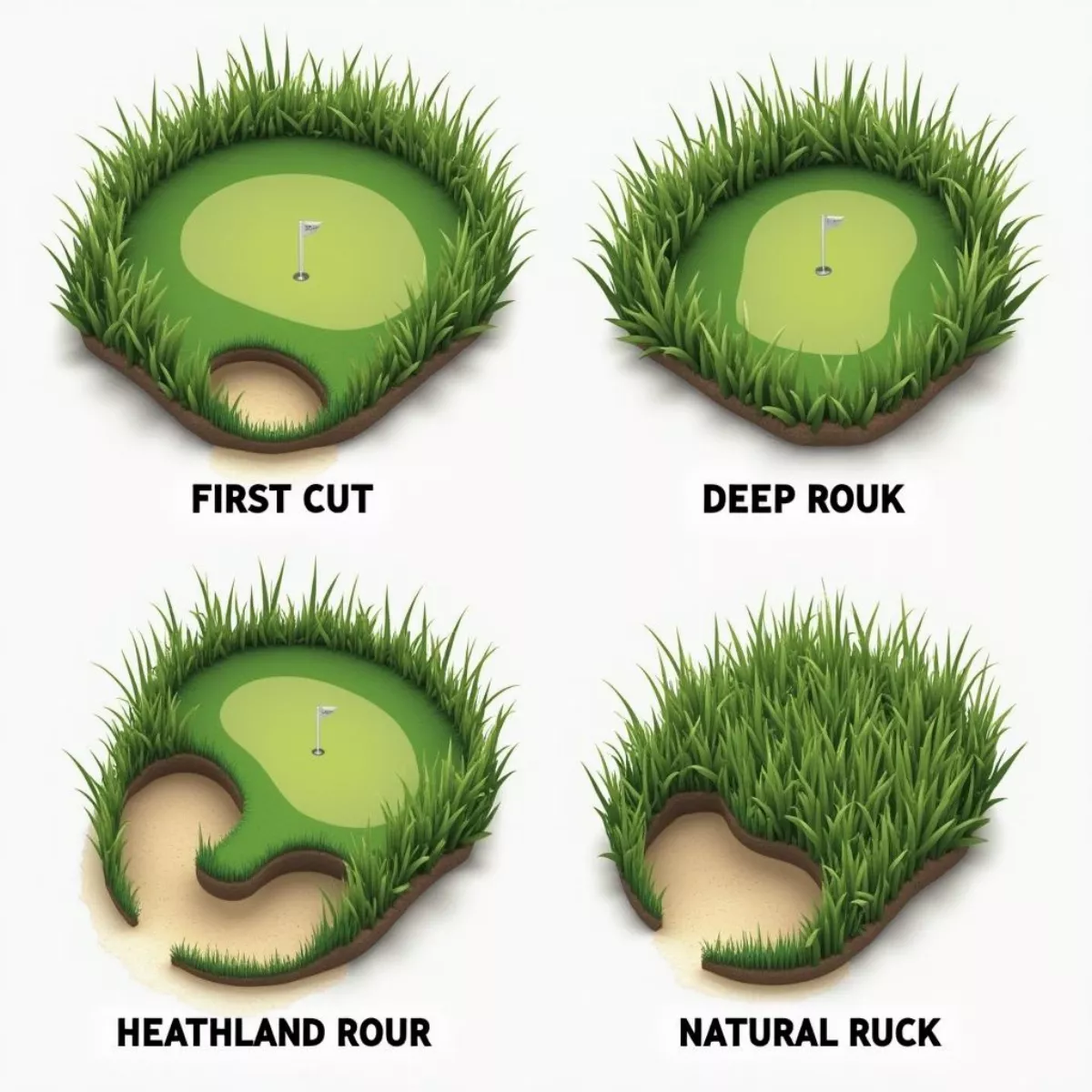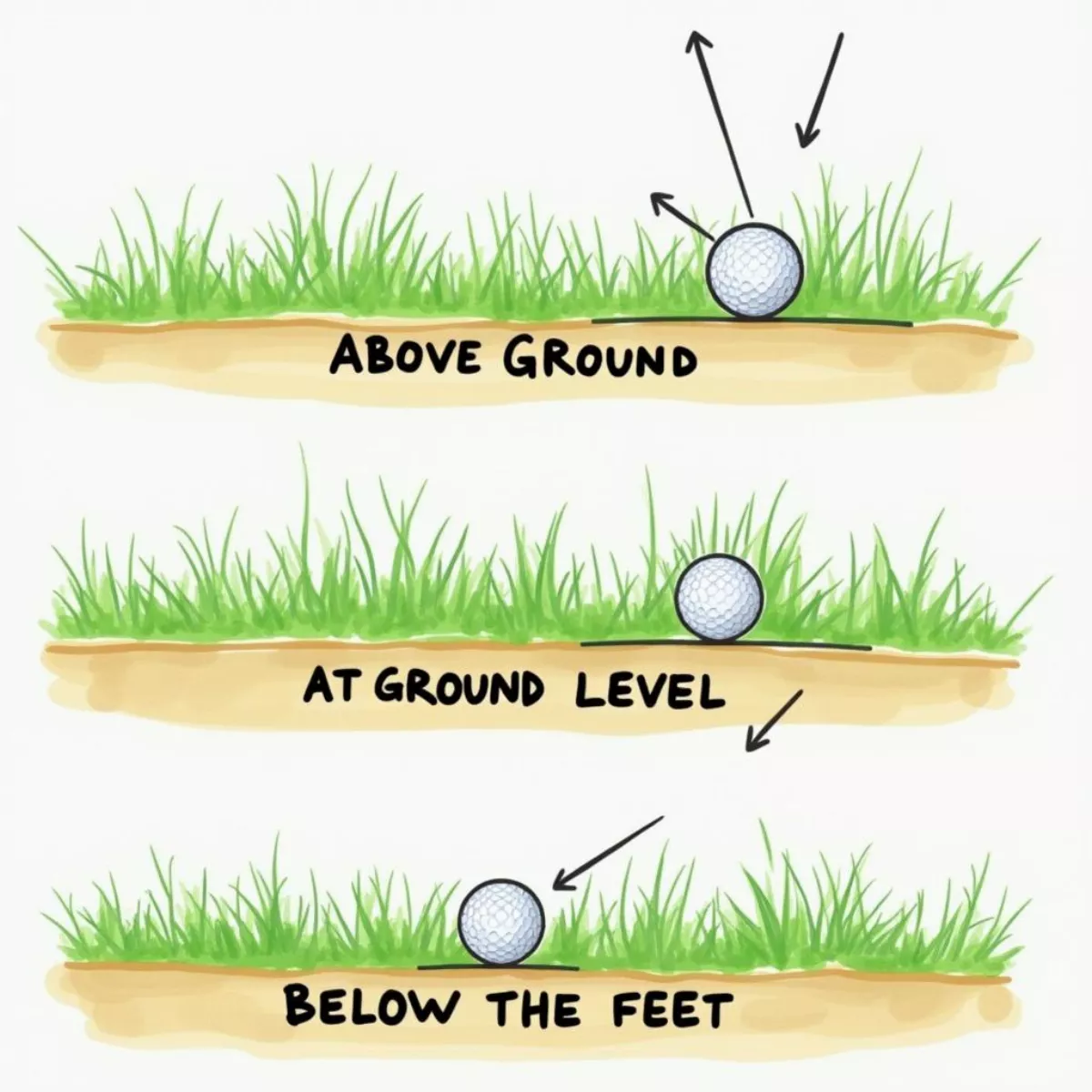When you step onto a golf course, the manicured greens beckon, but lurking just off the fairway is a less welcoming terrain: the rough. Often viewed as an obstacle, the rough plays a pivotal role in the strategy and challenge of the game. In this guide, we’ll delve deeply into what the rough is, its different types, its impact on play, and how to navigate it effectively.
What is the Rough?
In simple terms, the rough is the area between the fairway and the out-of-bounds or hazards. It’s typically characterized by longer grass, thicker vegetation, or other natural elements like trees. The purpose of the rough is to provide both a challenge for golfers and an environment for wildlife.
Types of Rough
- First Cut: This is the area just outside the fairway, where the grass is typically longer than on the fairway but shorter than in the deeper rough. It can still present difficulties but is often more manageable.
- Deep Rough: This refers to the areas farther away from the fairway where the grass is much taller and denser. Getting stuck here can lead to challenging shots.
- Heathland Rough: In some courses, particularly links courses, the rough may consist of heathland vegetation like gorse and heather, which adds more challenges due to their thickness and ability to snag golf balls.
- Natural Rough: It’s a non-maintained area of the course, often home to natural foliage and wild grasses, which can be incredibly difficult to navigate.
 Golf Course Rough Types
Golf Course Rough Types
Characteristics of the Rough
- Height: The taller the grass, the harder it is to find and play the ball.
- Density: Thick rough can conceal the ball entirely, requiring a bit of luck and skill to extricate it.
- Surface: Wet or muddy rough can cause clubs to snag, impacting shot execution.
Why Does the Rough Matter?
The rough serves multiple purposes on a golf course. Effectively, it:
- Challenges Players: It penalizes wayward shots, encouraging precision and control.
- Promotes Strategy: Players must decide whether to risk an aggressive shot or play it safe.
- Balances Course Design: It adds variety to the layout, maintaining interest throughout the round.
Strategies for Navigating the Rough
Getting stuck in the rough is challenging, but there are ways to improve your chances of making a successful recovery. Here are some key strategies to consider:
Understanding Your Lie
- Ball Above Ground: Play a more lofted club to help launch it back up to the fairway.
- Ball at Ground Level: Use a more aggressive swing to cut through the grass effectively.
- Ball Below Your Feet: Align your shoulders downward for better balance, and adjust the clubface to account for a potential pull.
 Golf Ball Lies in Rough
Golf Ball Lies in Rough
Club Selection
- Hybrid Clubs: They can be very effective for navigating rough, offering a combination of forgiveness and distance.
- Long Irons: If you’re confident, a long iron can penetrate deeper grass.
Technique Adjustments
- Steeper Angle of Attack: Digging in can help you get more power to reach the ball effectively.
- Follow Through: Maintain a nice follow-through to ensure you don’t get snagged.
Practice Drills
Incorporating rough shots into your practice session can pay off. Here are a couple of drills to consider:
- Aim for the Toughest Lies: During your practice, place a few balls in the rough and practice your recovery game.
- Focus on Different Clubs: Use several clubs to find out which works best for you in the rough.
The Mental Game
When faced with the rough, your mindset can significantly affect your performance. Remember:
- Stay Calm: Accept that the rough is part of the game.
- Visualize Success: Imagine your shot going perfectly to regain your composure.
 Golfer Playing from Rough
Golfer Playing from Rough
Key Takeaways
- The rough serves as both an obstacle and a strategic challenge on the golf course.
- Different types of rough require different approaches. Knowing the types can help you strategize effectively.
- Club selection and technique adjustments are crucial for making successful shots out of the rough.
- Mental resilience plays a huge role; staying composed can improve your chances of success.
FAQs
1. What is the rough in golf?
The rough is the area of longer grass and thicker vegetation found on a golf course, situated between the fairway and other hazards.
2. How does the rough affect my game?
The rough poses a challenge by making it harder to find and play your ball, often penalizing errant shots.
3. What are the different types of rough?
Types include the first cut, deep rough, heathland rough, and natural rough, each presenting unique challenges.
4. How can I improve my shots from the rough?
Focus on your lie, adjust your club selection, and modify your techniques for a better chance at a successful recovery.
5. Should I change my grip when hitting from the rough?
You may not need to change your grip, but ensure that you maintain control and don’t grip too tightly, which can hinder your swing.
6. Are there specific clubs that work better in the rough?
Hybrids and long irons are preferable for navigating the rough, providing balance and distance.
7. What mental techniques help when playing from the rough?
Staying calm, visualizing your shot, and accepting the challenge are essential to maintaining a positive mindset.
8. How important is practice for playing from the rough?
Practice is crucial; working on your technique in the rough can lead to better performance on the course.
9. Can I expect different rough conditions at various courses?
Yes, rough conditions can vary considerably by course, including grass height, density, and types of vegetation.
10. What should I do if my ball is lost in the deep rough?
If you can’t find your ball after a reasonable search, you may have to take a drop and proceed according to the rules of golf.
Navigating the rough can be challenging for any golfer, but understanding its nuances can enhance your game. Armed with these insights, you’ll be better prepared to tackle whatever the course throws at you!